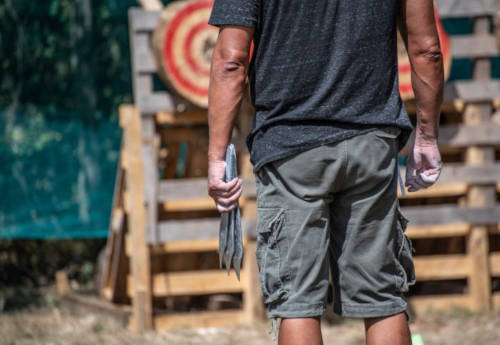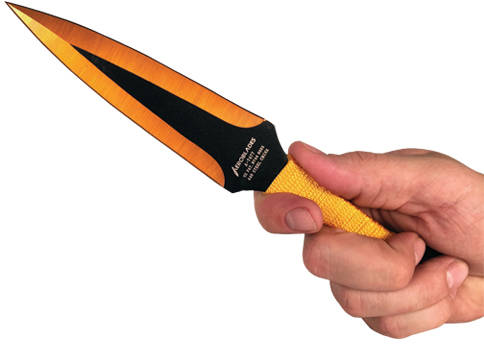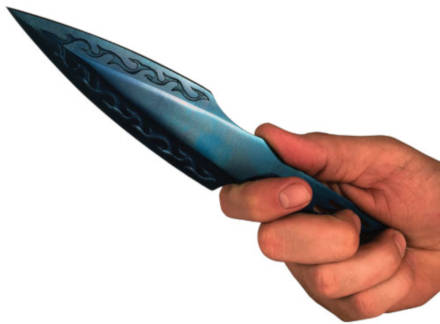How to Throw Throwing Knives

Thinking about becoming a street performer? If you aim to entertain and earn a decent profit, you'll have to focus on a talent not many others can provide to the crowd.
One amazing trick not a lot of others try is knife-throwing.
Knife-throwing is a fascinating act, leaving people spellbound as they witness it in various media. It even appears impossible when attempted.
Do you strive to have the same skill in making precise knife throws as the professionals?
Knife throwing has been in practice for ages. Now, it's becoming a new pastime for knife enthusiasts.
Are you interested in learning the art of knife throwing? Perhaps you're a little scared at the idea. But have no fear, we have the perfect guide for you.
Whether it's for a show, leisure, or to defend yourself, read on. We've got some pointers you need to know about how to use throwing knives.
Check out our guide for throwing knives below.
1. Choose Your Throwing Knives
When you're getting started in using throwing knives, you need to have the right knife.
The first step in learning how to throw knives is choosing the perfect throwing knife. Unfortunately, not any knife will work for this type of activity. You need to choose one that is used specifically for throwing.
You can pick out your ideal knife right here on our website.
First, the knife's blade has to be dull for the sake of safety. But, make sure that the knife has a sharp point. This makes it stick to the target when launched from your hand.
The knife itself should be thick enough to not bend the tip upon impact. For the weight, the knife should be around 200 grams. At this weight, it has a perfect balance and would work as a starting point.
Lighter knives are harder to control.
They're also prone to bouncing back randomly after hitting a target. If heavier than 200 grams, the knife is better suited for throwing at longer distances. But, you need more accuracy to pull it off.
There are also other matters on the knife's balance.
Knives are either handle-heavy, blade-heavy, or even-balanced. It depends on your preference. You should practice and find the knife that offers you the best control.
As for the knife's construction, it's best to have it as a single piece with little to no perforations. These perforations may become the cause for the knife breaking sooner than expected.
Getting the Right Knife
Whichever knife you choose, it needs to have certain qualities. Keep the following factors in mind:
- A sharp point
- Thick enough so it will not bend when it lands
- A solid blade to ensure it doesn't break
- Rounded corners
- Handles without excessive ornamentation
- At least 8 inches to a foot in length
Now that you've chosen the perfect knife, you need to learn the basics of throwing knives. Knife throwing doesn't mean simply throwing a knife at a target. You will need to learn the proper form and stance before you throw it.
2. The Right Stance
Once you have the knife of your choice, it's time to get into the right stance for knife-throwing. In preparing for your throw, focus on your footing and body posture.
Start with keeping your body relaxed. Being tense will cause you to overthrow the knife.
It will also lead to some inconsistent throws as well. Having the right posture by standing up straight should increase your throwing accuracy.
As for footing, it varies depending on which throwing hand you use. If you prefer right-handed throws, keep your right foot forward while your left foot is set a bit behind it. Do the reverse if you do left-handed throws.
The key is to stay comfortable and relaxed before throwing the knives at the target.
Basic Stance
In order to throw correctly, you need to start out properly.
Before you throw, make sure you:
- Stand up straight and stay relaxed.
- If you're right-handed, keep your right foot forward, and your left foot behind it.
- Hold the knife with your thumb over your other fingers.
3. Proper Grip
What is the best grip for throwing a knife?
There is no definitive answer or rule to this question as it depends on personal preference and what feels most comfortable for the individual. Some people prefer to grip the knife by the handle, while others prefer to grip it by the blade.
Some people find it easier to throw the knife with the blade facing downwards, while others find it easier to throw the knife with the blade facing upwards.
Ultimately, it is up to the individual to experiment with different grips and find what works best for them.
However, some universal principles come to play.
First, find the center of gravity for your knife. Knowing how balanced your knife is will determine how you should hold your knife.
Grip knives that are heavy on one side, whether the blade or the handle, on the lighter end. This way, you make use of the weight for the momentum when thrown.
Hammer Grip
This is one of the easiest grips to practice as you hold the knife as you would a hammer. There are variations where you place your thumb on the spine of the knife, which is the small side. While using this grip, make sure that your wrist is stiff when throwing to control the rotations.
One of the advantages of the hammer grip is that it works best with heavier knives. Another advantage is that the knife is easier to aim with.
Pinch Grip
This is best used in throwing light knives, launching them in a fast, sudden, and forceful method. To use this grip, pinch the knife between the thumb and index finger in a way that makes it an extension of your arm.
There are methods for using this grip. You may use your fingertips to grip the blade, or you can hold it with 2/3 of your finger that is next to your hand and thumb.
The blade grip is also another method that you can use. However, you need to make sure that the edges of the knife are blunt. You may injure yourself otherwise.
There are other variations and methods on the grips that you can explore. You can mix and match, seeing which one is comfortable for you.
4. Safety Checklist
Before you practice your knife throwing techniques, take note of these safety precautions.
First, make sure that the area is clear of anything.
If you're practicing in a wide area outdoors, make sure there are no obstructions that would go between you and your target. At least, have a wide range of 10 meters so you can see who will be coming towards the area.
Also, when someone approaches the area during practice, stop throwing to avoid injuring them. The key here is safety. Make sure spectators are at least three to four meters behind you.
For the targets, softwood is a good option as a target for throwing knives. Cardboard is great as well when it comes to lighter knives and if you're practicing indoors.
Do not target the trees as you may end up causing too much damage to it. Planks are great for target practice as well.
Also, make sure you're using footwear with hard toes. Steel toe boots are best used for this to protect your feet and toes.
Follow Proper Safety
As with any activity (especially one involving thrown knives!), you should practice safety. Make sure that you're not practicing within close distance of other people or pets. Look behind any fences or furniture to be sure.
You should also always pay attention and make sure that you're focusing on your target, as well as your surroundings. Always make sure you're wearing protective shoes to keep yourself safe.
5. Learn to Throw the Knife
There are various throwing techniques that you can practice. Some pertain to the method of throwing and how much the knife spins during flight.
The process of the throw comprises a series of steps. First, you need to find the distance.
Next, you need to take aim. Depending on the grip, your wrists should be stiff while launching the knife.
One more thing to consider is the shifting of weight during the throw -- shifting from the back towards the foot that's stepping forward.
Throwing methods tend to change. Some go for an overhead throw, which is common. There are also those who practice a side-throw or even an underhand throwing technique.
Basic throwing techniques tend to make use of the half or full rotation. Each of these is dependent on the distance of the throw. With more rotations as distance increases. Advanced throwers even make use of a no-spin technique.
With dedicated practice, you'll be able to find your rhythm and judge your release with ease.
Half Spin Throw
Once you've mastered the proper stance, you can begin with a simple half-spin throw. Since you're a beginner, this is the perfect throw to learn first.
1. Begin at a safe distance from your target.
How far you stand depends on the distance you're comfortable with as a beginner. You should start about six to seven feet away from the target.
2. Hold the knife with the blade facing towards you.
The knife's handle should face upwards.
3. Throw the knife towards your target using a bit of force.
Using too much force may throw off your aim.
Advanced Throws
Because you're still a beginner, you need to remember to throw at this distance until you feel comfortable enough to move on. More advanced throws will mean more spins and a further distance.
Learn How to Use Throwing Knives Today
With the right throwing knife and the right techniques, you'll be able to hone your skills in launching the blade toward the target.

It takes practice to learn how to use throwing knives. However, once you have the rhythm and the timing, you'll be able to strike the board with ease and precision.
You're Ready To Throw Down
Knife throwing can be an awesome skill that you can show off to friends and family. It's a skill that not many people have, so learning the art of throwing is extra special.
Are you in the market for throwing knives? Take a look at this throwing knife set or contact us for more information!
If you'd like a set of your own, we have many throwing weapons available. Or, if you have other questions, feel free to contact us!
Add your comment now!
Post Comment




